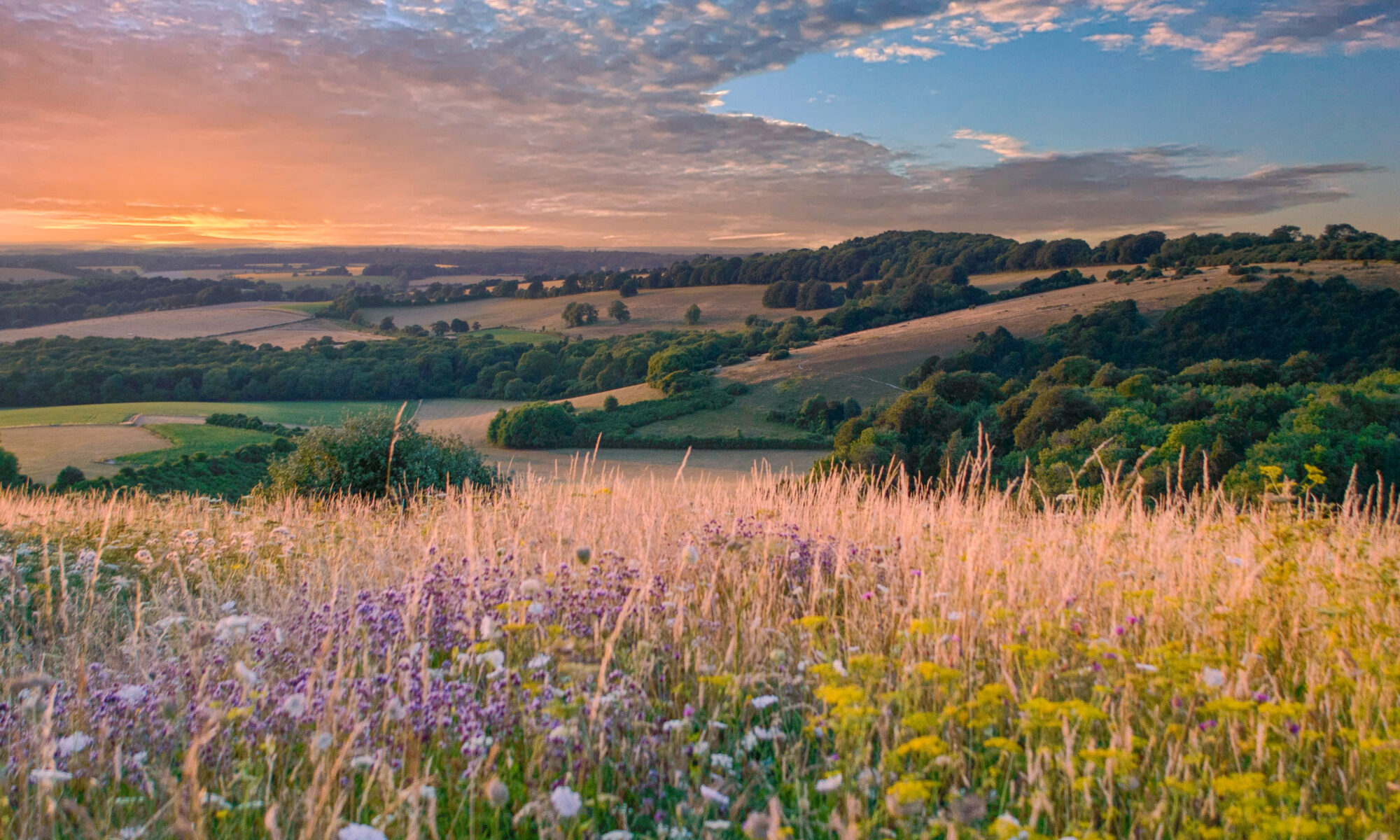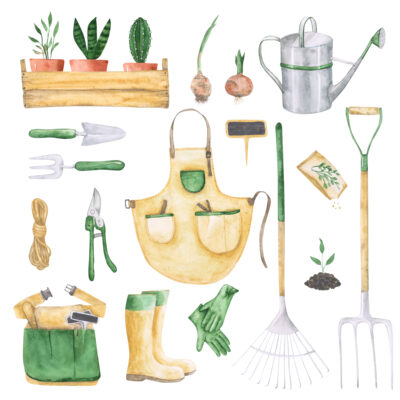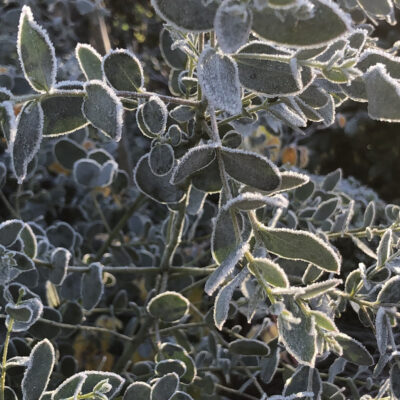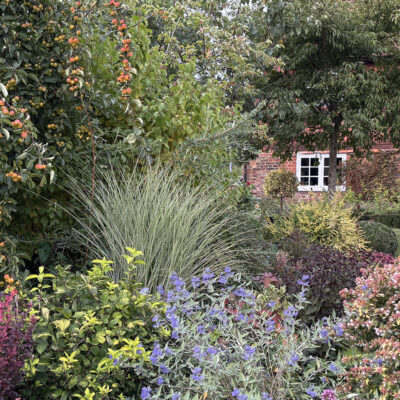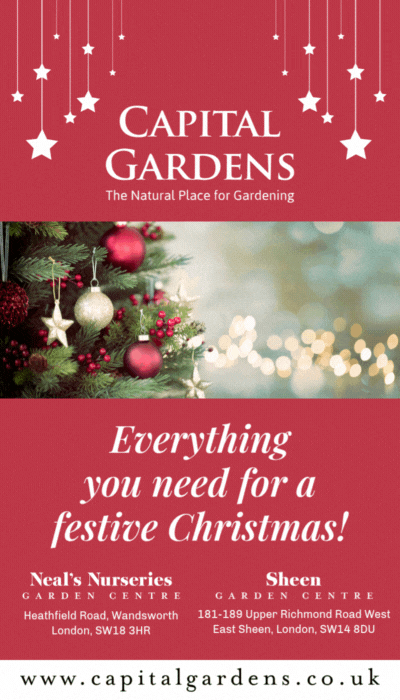Jo Arnell takes a wander through wonderful wildflowers and marvellous meadows
I have just come in from my field with a bag of Yellow Rattle seeds, having collected them for a friend to help her establish a meadow. It’s a very useful plant – for pollinators, but also in the way it helps the other wildflowers to get going. It will need to be sown within the next few weeks to guarantee success. That’s the thing about wildflowers, they are attuned to their environment and don’t always respond to our well meaning ideas about where and when they should grow. Meadows have a reputation for being hard to establish, but despite this, many of us are determined to have one – a magical wild space that flutters and buzzes with beauty and life with insects and birds. Utopia was not grown in a day, someone who lived near Rome might have said. They might also have said; give it a go even if it does take a while.
As with so many things, preparation is key, but so too is understanding what sort of meadow you want to create. Wildflower meadows fall into two main categories – annual and perennial. An annual meadow follows the traditional crop cycle, whereby the wildflowers germinate within a field of an annual crop like wheat. They flower and set seed for the following year just as the crop is harvested. A perennial meadow contains – in addition to annuals – plants that will live for longer than a year and should come back reliably once they are established (and provided they like the conditions). I’ll add in a third category – faux, or more kindly, ‘pictorial’ meadows, which falls into the annual section, but are populated by more exotic annuals and short-lived perennials – things like marigolds, xosmos and Verbena bonariensis – these are meadow plants, but from other countries, or they’re the cultivated cousins of our annual wildflowers.
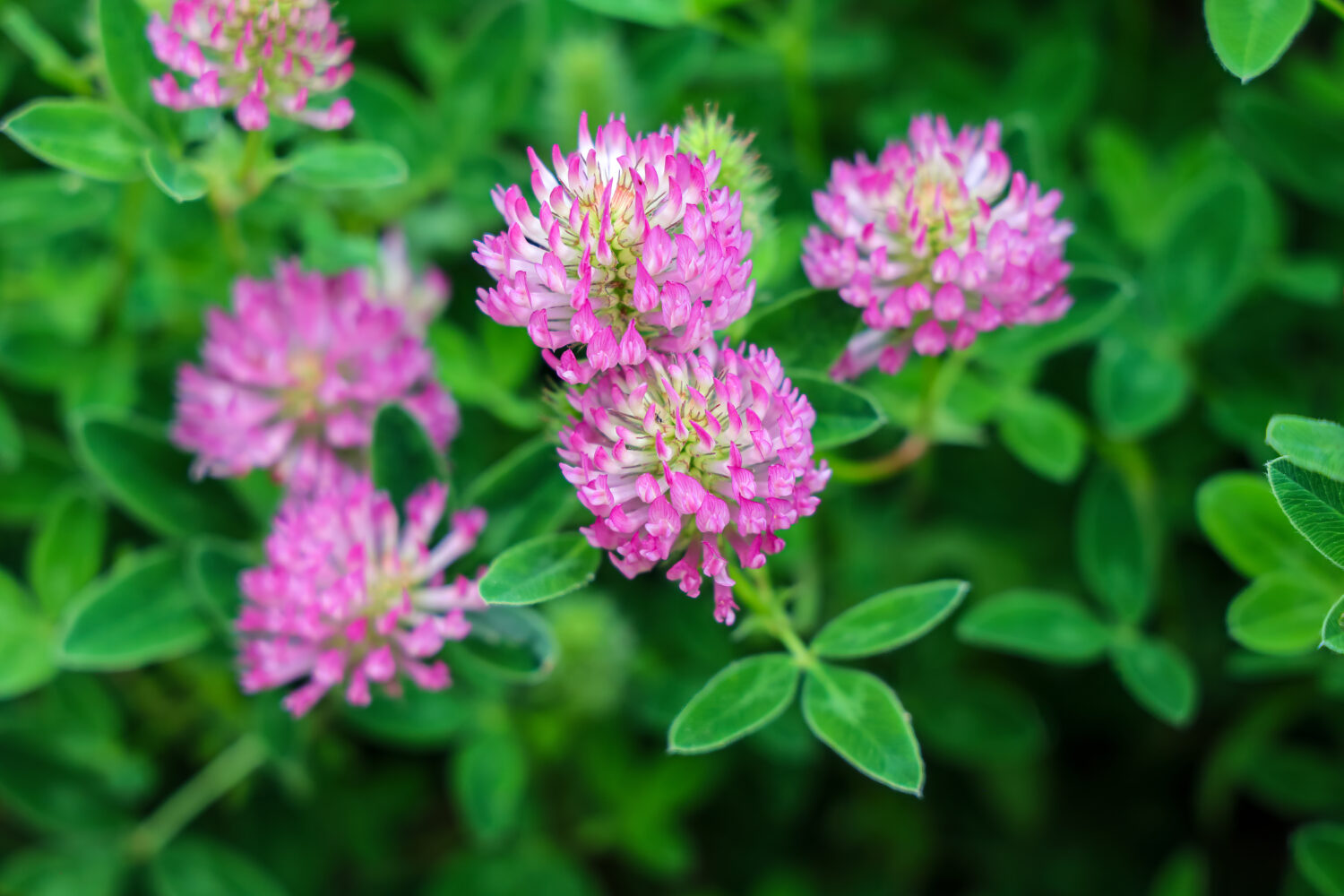
(Trifolium pratense) – flowers from May to October
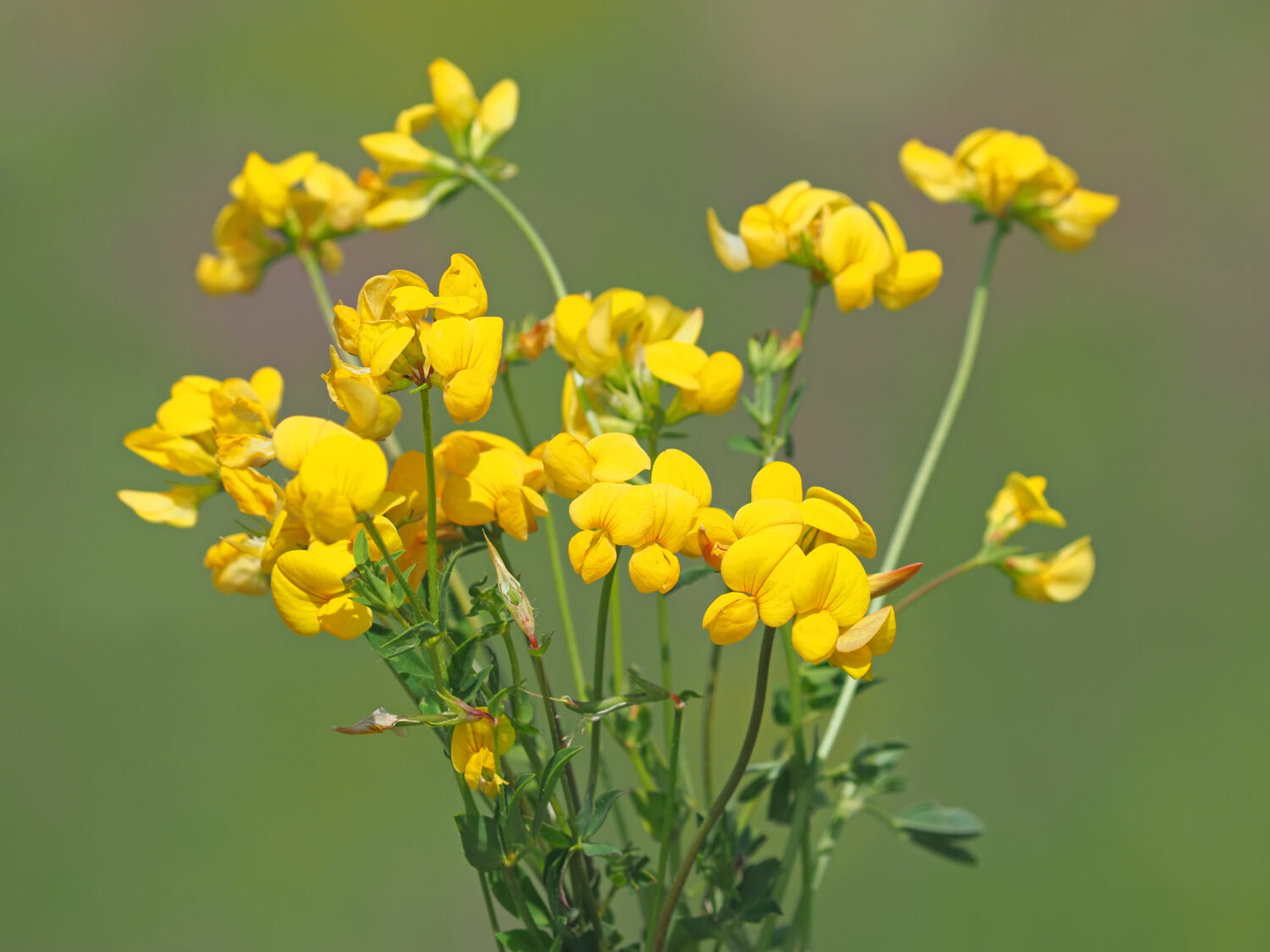
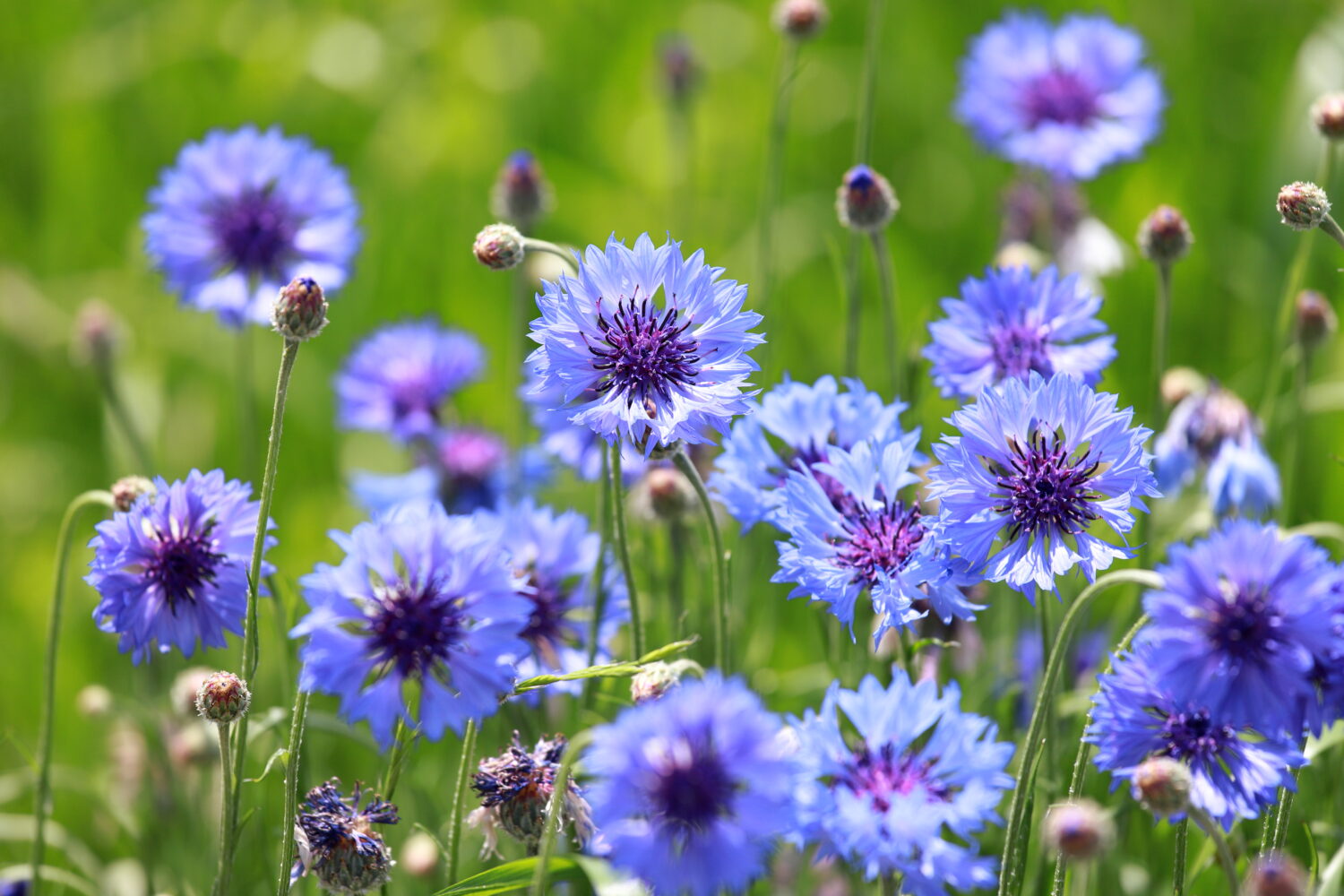

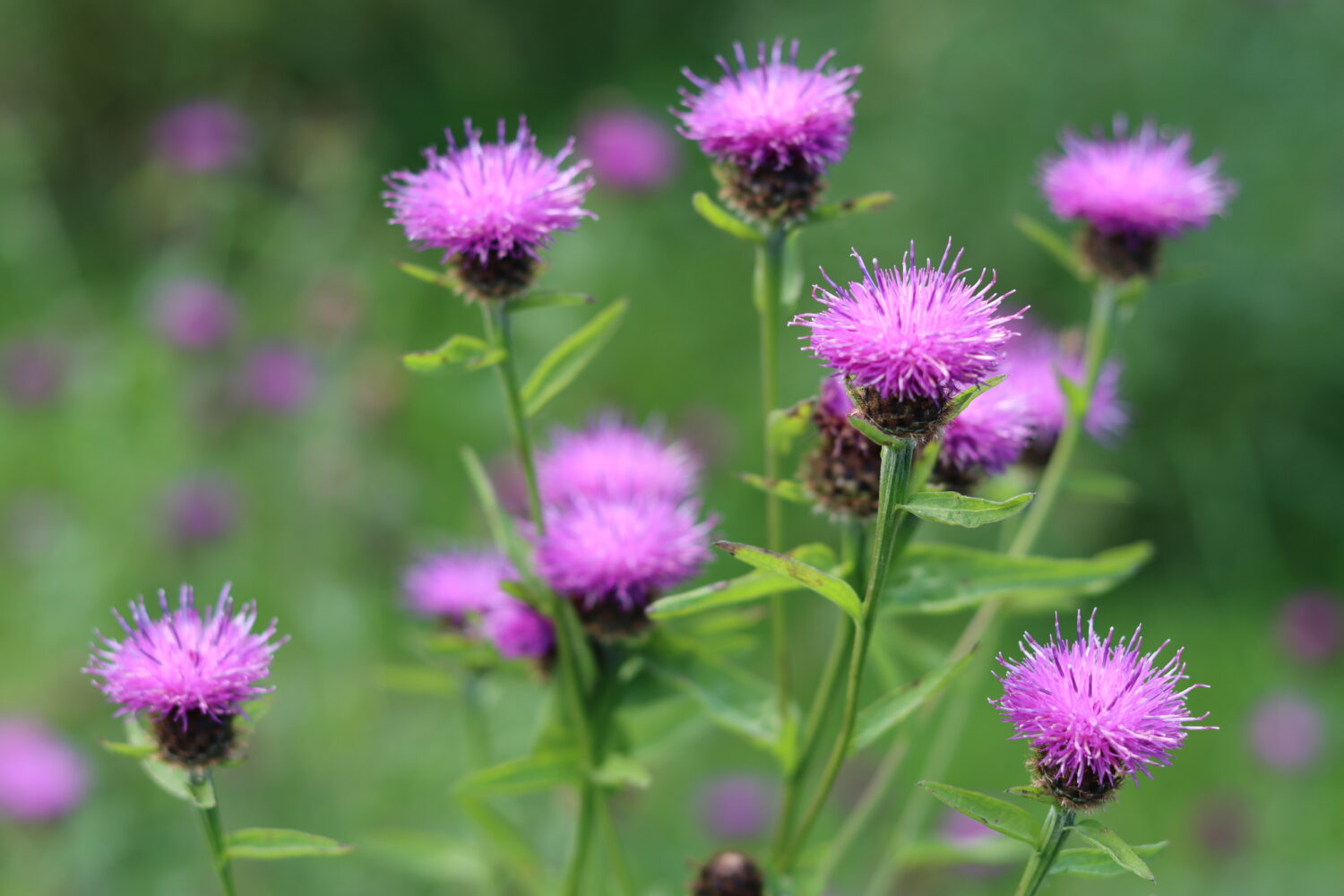
They will not be as beneficial to native creatures, but will give a colourful ‘meadow’ look and a supply of nectar. They might self-sow too, but will probably need to be topped up every year to keep the space looking floriferous. A meadow can be any size too. While a field
of several acres would be wonderful, a tiny patch somewhere in the garden will attract a surprising number of creatures. This could be a feature with a path mown around it, a section at the bottom of the garden, even just an edge or verge somewhere out of the way. Traditional hay meadows do prefer sun, but there are plenty of wildflowers that will thrive in shade too.
Preparing the Soil
Your soil is crucial to the long-term success of your wildflower meadow – different soils will suit some wildflowers more than others, so it is worth doing a little research. Exactly how you prepare the ground will depend on the type of meadow you want. Rich clay will support a completely different set of wildflowers to a free-draining sandy tilth, or the thin, alkaline layer above chalk. Most meadows like a sunny situation, but those from verges and woodland clearings will prefer semi-shade. Damp meadows support plants like cowslips and fritillaries and these will struggle in drier conditions. Find out what is thriving around you and, if possible, try to buy seed from a reputable supplier in your locality.
An annual meadow…
…is filled with opportunists. Poppies and cornflowers pop up in disturbed ground and these plants prefer bare soil in full sun – they will not like competition from grass, but will cope in more fertile situations. Clear the site, rake the soil to a fine tilth (a texture like crumble topping) then leave for a week or two to let any weed seeds near the surface pop up. Hoe these off with a sharp hoe, taking care not to disturb the soil too much (or you will bring more weed seeds up to the surface). Sow seeds in autumn or spring. Early autumn is a good time to sow hardy annuals – some will germinate immediately, growing strong roots over the winter, others (like the yellow rattle) need a period of cold to trigger germination, so will pop up in the spring once they’ve weathered the winter, a process called vernalisation, that stops tiny seedlings appearing at the wrong time of the year.
A perennial meadow…
…will be slower to establish, but will be longer lasting and provide a resource for a wide range of species. If you are making your meadow in an area that used to be lawn, you will need to strip off the grass (it makes good loamy compost if piled upside-down somewhere out of the way and left to rot down). This will reduce the soil’s fertility. Rake the soil to a fine tilth and remove any weeds that appear (as with the annual meadow prep above). Sow a mix of grasses (non-dominant species) meadow annuals and perennials – and either now, or in the following autumn, some yellow rattle. If sowing into existing grass, scarify (rake hard) to expose at least 50% bare soil. Then sow and lightly tread in – the seed needs to be in contact with the soil, but not buried by it.
If you are creating a meadow by letting some of your grass grow long – and this is a great way to slowly create a meadow without the invasive stripping back of everything – you will need to scarify (scratch roughly) the grass so that the soil is exposed and any seed you sow is in contact with it and has a bit of space to germinate.
When to Sow
Wild plants in the Northern hemisphere follow the natural cycle of the year, germinating and growing in the spring, flowering in early summer and setting seed in the late summer and early autumn, so you’ll get the best results from autumn sown seed. Most will need a period of cold to trigger germination, but some annuals are so keen to grow that they will happily germinate in the spring too.
Yellow rattle (Latin name Rhinanthus minor) is partially parasitic on grass and will weaken it, allowing the more delicate wildflowers to gain a foothold. Most meadow mixes now contain yellow rattle seed, but it’s worth seeking out seed that will be regionally adapted. It is an annual, best sown fresh from the current year’s seed in the autumn, or planted as plugs in spring.
Meadow Maintenance
It can take a few years to establish a meadow, especially a perennial one, which won’t necessarily flower much in the first year or two. The reverse is often true of an annual meadow, because the plants are primed to germinate and bloom in the first year – when you should get really colourful results.
Perennial meadows don’t necessarily need cutting each year, but if you do, mow once the flowers have finished and remove the cuttings. Annual meadow need to be cut in late summer annually, to ensure germination in following years. Turn the cuttings and then remove them (as if you are making hay) then tread in lightly so that the seeds are in contact with the soil.
Weeds…
…are also wildflowers! The problem is that some are very invasive and will take over the meadow, so it’s best to remove strongly growing plants like dock, thistles, nettles and the like as and when they appear.
Find out about Jo’s gardening courses, run from her beautiful home in Woodchurch, Kent, by visiting hornbrookmanor.co.uk.
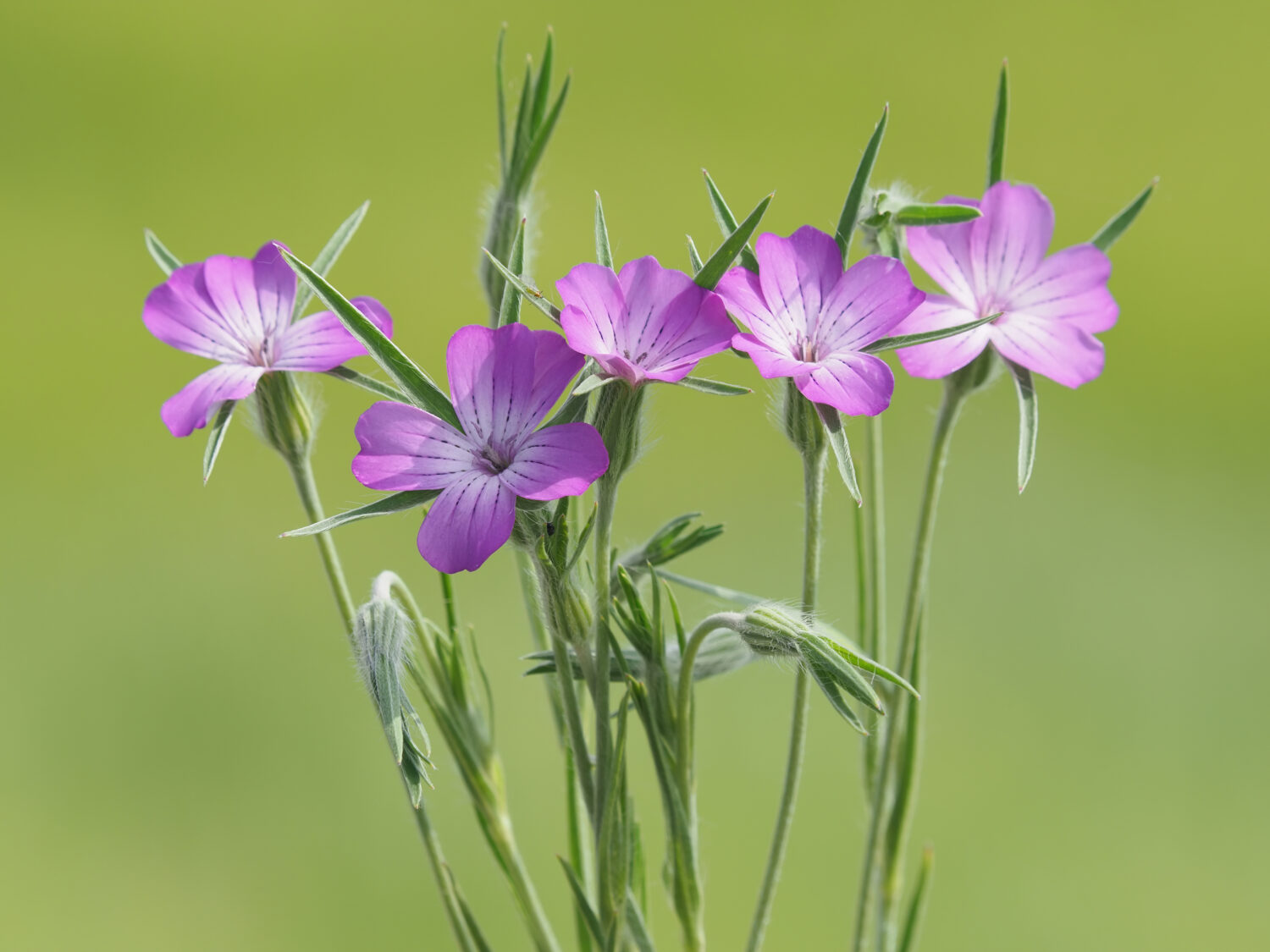

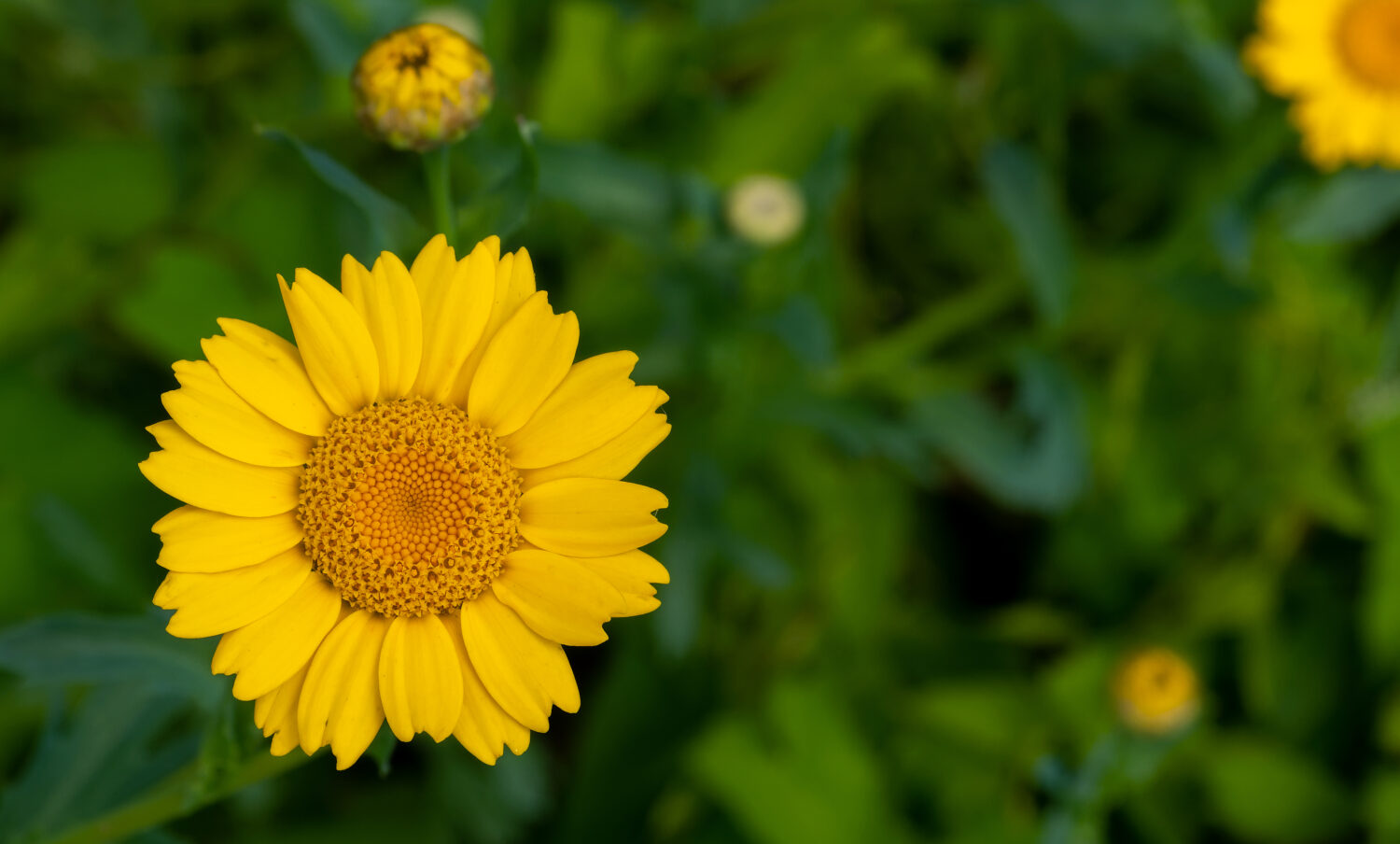
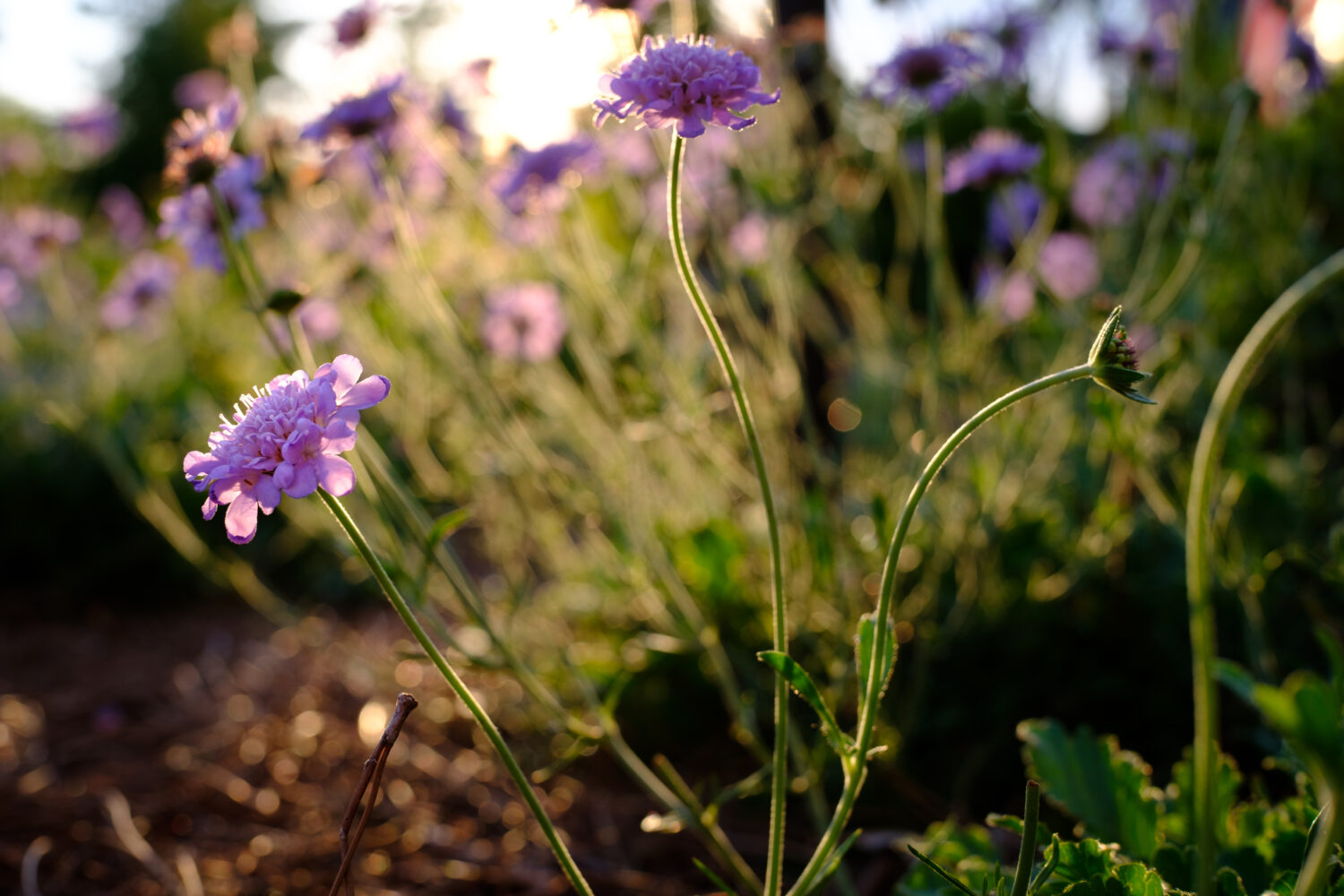

wide range of pollinators
You may also like
Just one pruning thing
Jo Arnell tackles the complexities of this often dreaded garden task Pruning can seem daunting – and sometimes like one of the dark arts – every plant seems to need a different approach at some other time of the year....
In the bleak midwinter
Jo Arnell explains how to brave the dark and chilly winter blues with a little help from your garden Winter can be hard for some of us and Seasonal Affective Disorder (SAD) is a real thing, linked to the lack...
Let’s go local
Jo Arnell gives her recommendations for plants that thrive naturally in the great British climate Our native plants are tough. Able to survive frosts, wet winters and – once established – short periods of drought too. They are the bedrock,...
